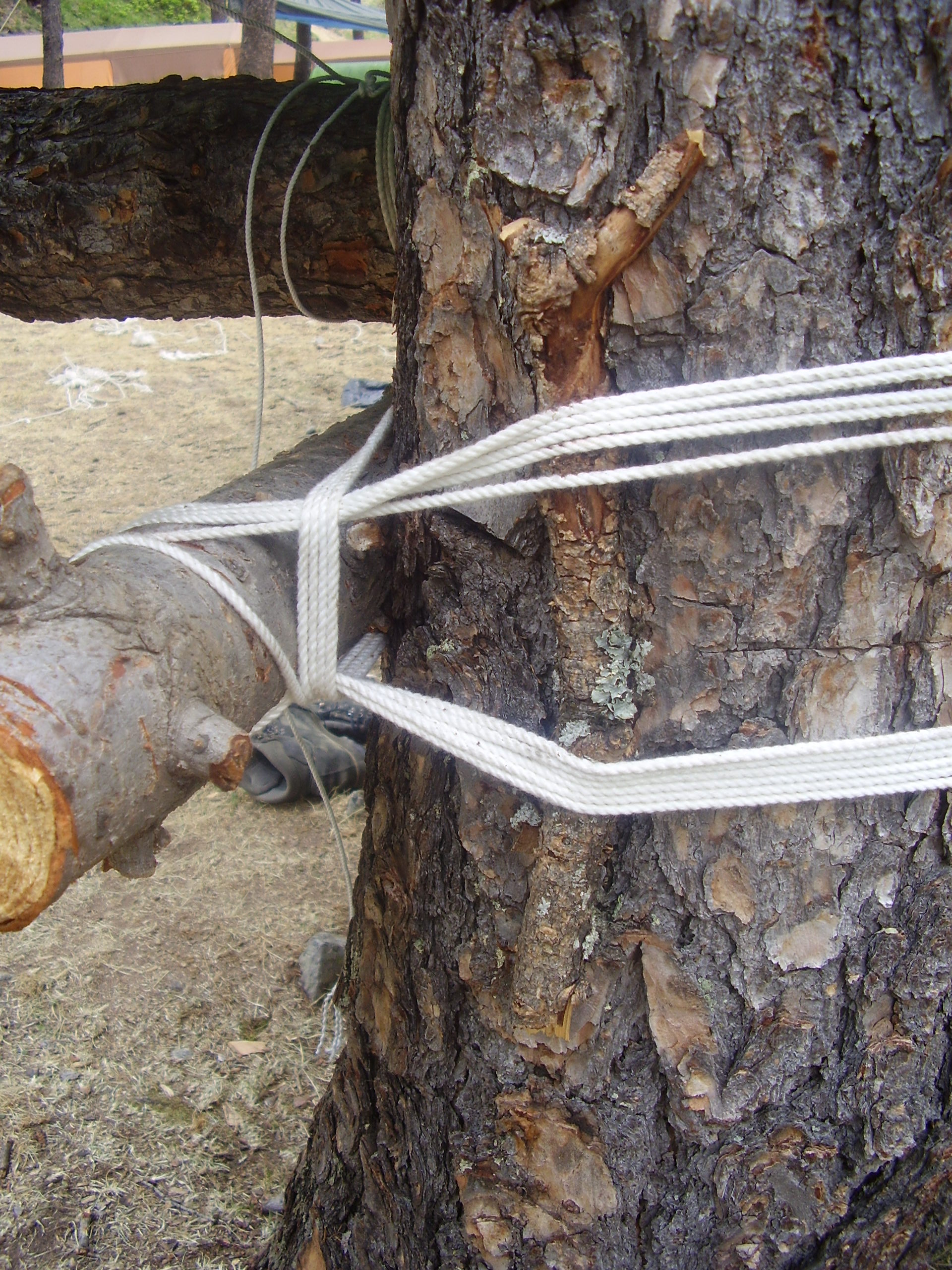Lashing (ropework) on:
[Wikipedia]
[Google]
[Amazon]
 A lashing is an arrangement of
A lashing is an arrangement of

rope
A rope is a group of yarns, Plying, plies, fibres, or strands that are plying, twisted or braided together into a larger and stronger form. Ropes have high tensile strength and can be used for dragging and lifting. Rope is thicker and stronger ...
, wire, or webbing with linking device used to secure and fasten two or more items together in a somewhat rigid manner. Lashings are most commonly applied to timber poles, and are commonly associated with cargo, containerisation, the Scouting
Scouting or the Scout Movement is a youth social movement, movement which became popularly established in the first decade of the twentieth century. It follows the Scout method of informal education with an emphasis on practical outdoor activi ...
movement, sailor
A sailor, seaman, mariner, or seafarer is a person who works aboard a watercraft as part of its crew, and may work in any one of a number of different fields that are related to the operation and maintenance of a ship. While the term ''sailor'' ...
s, and gardener
A gardener is someone who practices gardening, either professionally or as a hobby.
Description
A gardener is any person involved in gardening, arguably the oldest occupation, from the hobbyist in a residential garden, the home-owner suppleme ...
s.
It has been imagined that the first lashing made by humans was wrapping a few strips of bark around a stone to hold it to a tree branch to make an ax to hunt and build with. In modern times, the same methods are used, but strips of bark and vines have been replaced with natural and synthetic fiber ropes. Scout
Scout may refer to:
Youth movement
*Scout (Scouting), a child, usually 10–18 years of age, participating in the worldwide Scouting movement
** Scouts (The Scout Association), section for 10-14 year olds in the United Kingdom
** Scouts BSA, sect ...
s and campers use lashings to build camp gadgets and improve their campsites for comfort and convenience, including the building of rafts for transport and competitive events. Lashings are also used in pioneering, the art of creating structures such as bridges and towers, using ropes and wooden spars.
There are still areas in the world where lashing spars (or poles) is the basic means of building.
Types
Square lashing
Square lashing is a type of lashing used to bind spars together, at right angles to one another. There are different types, but all consist of a series of wraps around the spars, and frapping around the line running between the spars.Diagonal lashing
Diagonal lashing is a type of lashing used to bind spars or poles together, to prevent racking. It gets its name from the fact that the wrapping turns cross the poles diagonally and is used to spring poles together where they do not touch as in the X-brace of a trestle.Shear lashing
Shear lashing (two-spar shear lashing) also spelled "sheer lashing" is used for lashing together two parallel spars which will be opened out of the parallel to form sheer legs as in the formation of an A-frame. The clove hitch is tied around one leg only and frapping turns are taken between the poles.Round lashing
The round lashing is most frequently used to join two poles together to extend their length. Typically, two lashings are used a reasonable distance apart for extra strength. In the simple version, a clove hitch is tied around both poles and there are no frapping turns. The nautical term gammon means a round lashing of rope or iron hardware to attach a mast to a boat or ship.Tripod lashing
The tripod lashing (also known as gyn lashing, figure of eight lashing, and three-spar shear lashing) is used to join several spars together to form a self supporting structure. If the lashing is tied around three spars, then the structure is called a tripod, but quadpods can also be made by using four spars.See also
* Binding knot * D-ring *List of knots
This list of knots includes many alternative names for common knots and lashings. Knot names have evolved over time, and there are many conflicting or confusing naming issues. The overhand knot, for example, is also known as the thumb knot. The ...
References
External links
* * {{DEFAULTSORT:Lashing (Ropework) Ropework Survival skills